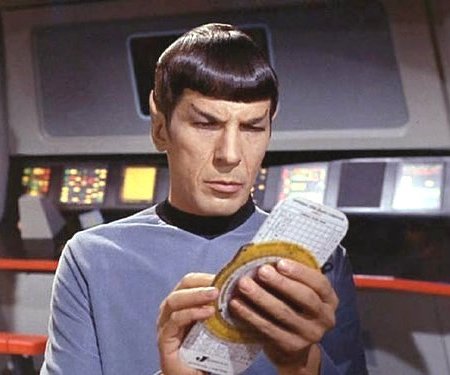Circular slide rule
I explained the basics of how a slide rule works in the previous post. But how does a circular slide rule work?

Apparently the prop Mr. Spock is holding is an E6B aircraft slide rule. It includes a circular slide rule and more functionality.
Start with an ordinary straight slide rule, with each bar labeled 1 on the left and and 10 on the right end. Now imagine bending this into a circle so that you now have two concentric circles. For x between 1 and 10, the label for x is located at
log10 x * 360.
Suppose you want to multiply x and y, and xy is less than 10, i.e. log10 x + log10 y < 1. Then the multiplication procedure works exactly analogously to how it would have with a straight slide rule. Line up the 1 of the inner ring with the position of x on the outer ring. The position of y on the inner ring lines up with xy on the outer ring because it is at position
log10 x * 360 + log10 y * 360 = log10 xy * 360.
But what if xy > 10, i.e. log10 x + log10 y > 1? In that case the y on the inner ring is at position
(log10 x + log10 y) * 360- 360 = (log10 x + log10 y - 1) * 360
which is equal to
(log10 x + log10 y - log10 10) * 360 = log10 (xy/10) * 360
and so the y on the inner ring is aligned with the position labeled xy/10. As we noted in the previous post, slide rules only give you the significand (mantissa) of the result, so a slide rule doesn't know the difference between xy and xy/10. That's up to you to keep up with.
The post Circular slide rule first appeared on John D. Cook.